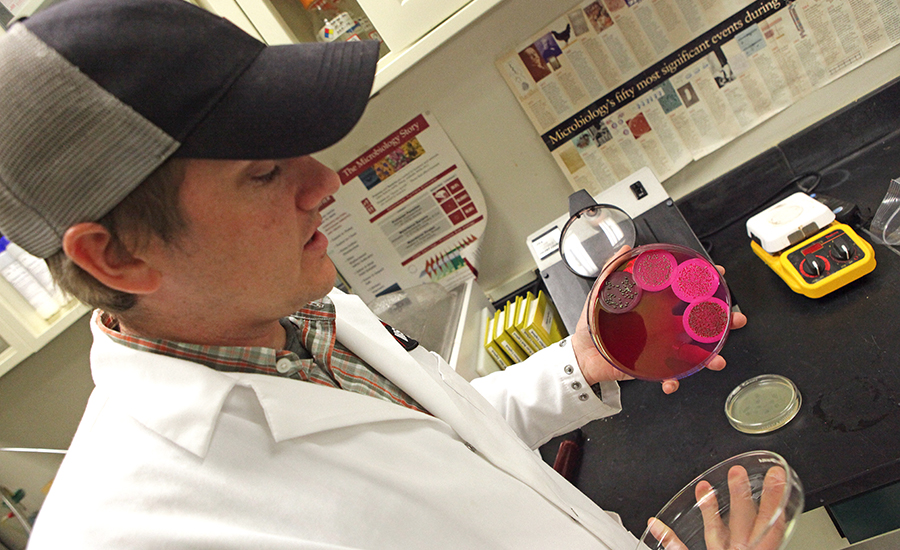The science behind water filters, plus advice from mom.
By David Clucas
Off of the bustling Cascade Designs factory floor in Seattle, WA— where they make Therm-a-Rest sleeping pads and MSR water filters and stoves — lays a quieter setting where men and women in lab coats do real science.
It’s the MSR water laboratory run by Zac Gleason, a microbiologist continuously testing and tinkering with ways to keep bad stuff out of our water. On a recent visit by SGB, Gleason showed us live bacteria and viruses — fortunately he’s never gotten sick from his job — and how day-in and day-out, his team runs their products through a battery of tests.
We ask Gleason what’s the difference between all of the filters consumers see today on retail shelves, which work best in given situations, and why mom has the best advice for staying healthy.
In what way have portable water filters improved the most during the past five years? The increase in total available, non-chemical-related options has been significant, but the biggest change is probably in both flow rate and over all filter capacity, especially if you consider the volume that filters can treat between cleanings.
Consumers see water filter options from $35 to $350. What are the different levels of water filters and who needs what type? The Summit Register (MSR’s blog) has a great explanation of this and the different technologies available if you want more details, but briefly there are three types of true filters (that physically remove contaminants) — pre-filters, micro filters and purifier filters.
• The pre-filter is usually greater than 1 micron in pore size and is capable of removing silt and some large organisms like amoeba and/or protozoa (crypto/giardia). It is critical to read the packaging to make sure you know what your pre-filter can do, as many only remove silt. This is great for people who are going to use tablets or liquid chlorine to treat their water because it improves aesthetics and reduces protozoa concerns.
• The micro filter is typically about 0.2 microns in pore size and is capable of removing everything the pre-filter does plus bacteria. Some manufacturers play games with claiming their pore size is better — 0.1 micron or absolute versus nominal — but what you really want to look at is was it tested with bacteria and achieved greater than 6.0 log reduction (99.9999 percent) in both clean water and EPA/NSF P231 GTW3 water. These filters are the most widely used and are great for relatively pristine backcountry environments (United States, Canada, most of Europe, Australia and New Zealand).
• The purifier filter is less than 0.02 microns in pore size and is capable of removing everything the micro filter does plus viruses. The same story applies here in terms of pore size games… look for test results showing greater than 4 log viral reduction (99.99 percent) in both clean water and EPA/NSF P231 GTW3 water. These filters do it all, which usually comes with a higher price point but if you are traveling in the developing world or in areas that are heavily trafficked by humans, this is what you want.
Where do you see the most growth in water filter customers — is it the backcountry hiker, the survivalist or international traveler? I’m not a sales guy, but the feel I get is that the biggest growth is in the area of the more casual day hiker or weekend warrior type. People who don’t want to carry all the water they need, but typically only take in the great outdoors in smaller doses. That said, I think all areas have been steadily growing as people discover the wonder of the world outside the city and learn about their own favorite way to enjoy it.
OK, so a consumer buys a top-of-the-line filter — but there’s still the potential to catch something because of human error. What do you think is the number one mistake that customers make when collecting water and how can they prevent it? Hah, well … everyone has heard it before countless times but … WASH YOUR HANDS!










